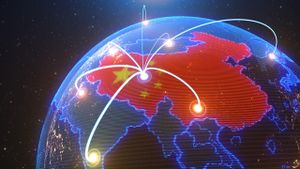Early on February 19, 2025, residents across Poland were treated to an extraordinary spectacle as bright streaks of light illuminated the sky. Many citizens initially mistook the phenomenon for shooting stars or fireworks, sharing videos and images on social media. Observers reported the dazzling sight at various locations, particularly around 4:45 AM, with some sightings noted even earlier on February 18.
Reports began pouring in, especially from the Lubusz Voivodeship, where many locals witnessed what they described as fiery objects falling from the sky. Social media was flooded with posts capturing the stunning moment, characterized by long, glowing trails. It felt like a cosmic light show, but the reality behind the phenomenon turned out to be more unsettling.
Experts quickly identified the source of the lights: debris from the second stage of SpaceX's Falcon 9 rocket, launched from Vandenberg Air Force Base, California, on February 1. According to the Polish Space Agency (POLSA), the rocket stage had re-entered the Earth's atmosphere uncontrollably, burning up as it encountered atmospheric friction around 4:46 to 4:48 AM, right above Poland.
Karol Wójcicki, an astrophysicist and popular astronomy figure, clarified the event on social media, confirming, “It was the remnants of the second stage of the Falcon 9 rocket, which were seen burning up upon re-entry.” This explanation settled the initial confusion, as more people learned of the true nature of the dazzling display.
Rapid advancements in space travel have made the use of rockets like the Falcon 9 commonplace, primarily for launching satellites, including the 22 Starlink satellites as part of SpaceX's mission. The Falcon 9 rocket is typically engineered for controlled re-entry, aimed at mitigating space debris. Nevertheless, on this occasion, circumstances led to its visible disintegration over populated areas.
The incident raised questions about space debris and safety, with various media platforms echoing concerns about the increasing risk of unregulated debris re-entering the atmosphere. This was echoed by the Polish Space Agency, which noted, "The flight path of this object was known to POLSA, and to the agencies responsible for monitoring the risk of artificial objects re-entering Earth's atmosphere within Europe." The agency emphasized the need for improved systems and international cooperation to predict and manage such risks.
Many locals described hearing a thunderous rumble accompanying the visual display, contributing to the thrill and fear of witnessing such an event. Eyewitness accounts, particularly from the region's storm chaser community, highlighted the unique nature of the occurrence. One eyewitness remarked on social media, "A fellow storm chaser shared his excitement, asking, 'Did you hear it?' The excitement was palpable as people came together to witness this celestial event—a local phenomenon with global concerns.
This event has sparked discussions on the importance of regulating space traffic to avoid similar occurrences. Scientists and authorities urge vigilant tracking of space debris to foresee risks posed by decaying satellites and spent rocket stages to avoid accidents or damage on the ground. These discussions highlight how growing numbers of satellites and missions could affect not only the future of space exploration but also the safety of those on Earth.
The Falcon 9 rocket's second stage, responsible for deploying its payload, typically undergoes controlled deorbit maneuvers over oceans to reduce debris recycling on land and risk factors. Unfortunately, this event prompted questions about deviations from standard protocols, as experts noted difficulties in tracking such objects effectively once they lose their control systems.
Closing the discussion, the surrounding community reflected on the incident's impact and lessons learned, with local meteorology enthusiasts expressing interest and excitement over the specter of witnessing such cosmic activities. The incident left them pondering the broader significance of being able to see remnants of our actions beyond the Earth as community members reunited over shared experiences and discussions of the skies overhead.
Such cosmic events certainly fuel the imagination and bring together disparate facets of science, technology, and the enchanting spectacle of our universe—a reminder of how interconnected our world is with the cosmos.



